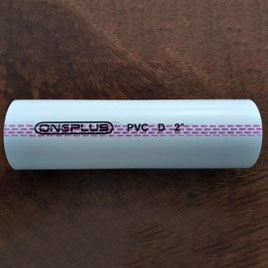Tee Spool Connection Tutorial: Step-by-Step Guide
Tee Spool Connection Tutorial: Step-by-Step Guide
A tee spool is a commonly used component in piping systems to split the flow of fluids or gases in two directions. Connecting a tee spool can be done using various methods, depending on the type and material of the pipes being used. In this article, we will discuss the basic steps for properly and safely connecting a tee spool.
What is a Tee Spool?
A tee spool is a "T"-shaped fitting used to connect three pipes in a piping system. The main function of a tee spool is to change the flow direction or distribute the flow to two different paths. It is commonly used in installations in industries such as oil and gas, chemicals, and HVAC systems.
Preparations Before Connecting the Tee Spool
Before starting the tee spool connection, there are a few preparations that need to be made, including:
Check the Materials and Components
- Ensure the tee spool being used matches the specifications of the existing pipes.
- Check if the gaskets and fasteners are in good condition.
Required Tools
- Pipe cutter (if necessary)
- Wrenches or fastening tools
- Welding machine (for welding connections)
- Measuring tools for distance and angle
- Lubricants or cleaning fluids to ensure the pipes and tee spool are free from debris.
Safety
- Wear personal protective equipment (PPE) such as gloves, eye protection, and hearing protection.
- Make sure the work area is safe and free from distractions that could interfere with the connection process.
Step-by-Step Guide for Connecting a Tee Spool
Here are the steps to properly connect a tee spool:
1. Prepare the Pipes and Tee Spool
- Ensure the pipes to be connected to the tee spool are cut to the correct size.
- Clean the ends of the pipes and the tee spool to remove any dirt or debris that could interfere with the connection process.
2. Measurement and Marking
- Carefully measure the position of the pipes to be connected. Ensure the angle between the main pipe and the branch pipe is in line with required standards.
- Mark the connection points on the pipes using a marker or measuring tool.
3. Install the Tee Spool
- Position the tee spool on the main pipe, making sure it is aligned according to the markings made earlier.
- If welding, ensure the welding angle is precise and the pipes are securely attached.
4. Connection with Welding or Bolts
- For welding: If using a welding machine, ensure the joint is welded using the appropriate technique. Use arc welding or TIG (Tungsten Inert Gas) welding if necessary, depending on the pipe material.
- For bolting: If using bolts, install the bolts or fasteners on the tee spool. Make sure the fasteners are tightly and evenly secured.
5. Inspect the Connection Quality
- Once the connection is complete, check the strength and stability of the joint. Perform a leak test to ensure there are no leaks at the connection points.
- Ensure that the connection is not distorted and remains in a stable position.
6. System Testing
- After the tee spool is properly installed, conduct a flow test to check if the fluid or gas flows smoothly and without leaks.
Additional Tips:
- If using pipes with sensitive materials such as PVC or plastic, ensure to use appropriate cutting and welding tools for those materials.
- Always follow industry-standard safety procedures during the connection process, especially when using cutting tools or welding machines.
- If unsure about the connection technique, it’s best to consult a technician or professional experienced in pipe connections.
Conclusion
Proper tee spool connections are essential to ensure an efficient and safe piping system. By following the steps above, you can make a good connection, reduce the risk of leaks, and ensure smooth flow efficiency. Always check each connection periodically and replace any damaged components to keep the piping system working optimally.

.png)



